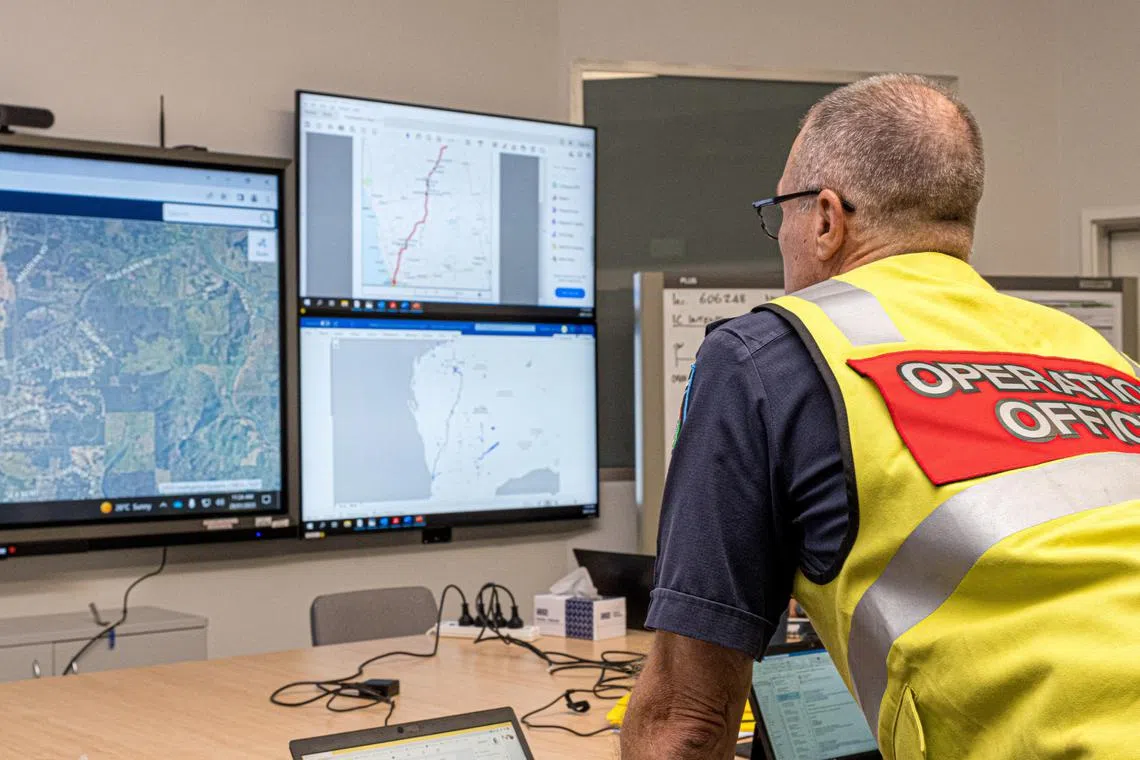Mining giant Rio Tinto apologises for loss of tiny radioactive capsule in Australian outback
Sign up now: Get insights on Asia's fast-moving developments

A member of the Incident Management Team coordinates the search for the radioactive capsule.
PHOTO: REUTERS
Follow topic:
MELBOURNE – Mining giant Rio Tinto apologised on Monday for the loss of a tiny radioactive capsule
The radioactive capsule was a component in a gauge used to measure the density of iron ore. The capsule was entrusted to a specialist contractor to transport. The loss may have occurred up to two weeks ago.
The authorities are now grappling with the daunting task of searching along the truck’s 1,400km journey from north of Newman, a small town in the remote Kimberley region, to a storage facility in the north-eastern suburbs of Perth – a distance longer than the length of Great Britain.
The task, while akin to finding the proverbial needle in a haystack, is “not impossible” as the search party is equipped with radiation detectors, said Professor Andrew Stuchbery, who runs the department of Nuclear Physics and Accelerator Applications at Australian National University.
“That’s like, if you dangled a magnet over a haystack, it’s going to give you more of a chance,” he said. “If the source just happened to be lying in the middle of the road, you might get lucky... It’s quite radioactive, so if you get close to it, it will stick out.”
The gauge was picked up by the specialist contractor from Rio’s Gudai-Darri mine site on Jan 12. When it was unpacked for inspection last Wednesday, the gauge was found to be broken, with one of four mounting bolts missing and screws from the gauge gone.
The authorities suspect vibrations from the truck caused the screws and the bolt to come loose, and the radioactive capsule from the gauge to fall out of a gap in the truck.
Rio’s iron ore division chief Simon Trott said: “We are taking this incident very seriously. We recognise this is clearly very concerning and are sorry for the alarm it has caused in the Western Australian community.”
The silver capsule – 6mm in diameter and 8mm long – contains caesium-137, which emits radiation equal to 10 X-rays per hour.
The authorities have recommended that people stay at least 5m away as exposure could cause radiation burns or radiation sickness, though they add that the risk to the community is relatively low.
Prof Stuchbery said: “From what I have read, if you drive past it, the risk is equivalent to an X-ray. But if you stand next to it, or you handle it, it could be very dangerous.”
Western Australia state’s emergency services department has established a hazard management team and has brought in specialised equipment that includes portable radiation survey meters to detect radiation levels across a 20m radius and which can be used from moving vehicles.
Mr Trott said the contractor engaged by Rio had the expertise and certification to safely package and transport the gauge.
He added that radiological surveys of all areas where the device had been and roads within the mine site, as well as those leading away from the mine, have been completed. Rio was also conducting its own investigation into how the loss occurred, he said.
Analysts said the transport of dangerous goods to and from mine sites was routine, adding that such incidents have been extremely rare and did not reflect poor safety standards on Rio’s part.
In 2020, two ancient and sacred rock shelters in the Pilbara region of Western Australia were destroyed by Rio Tinto as part of the company’s iron ore mine expansion. REUTERS

